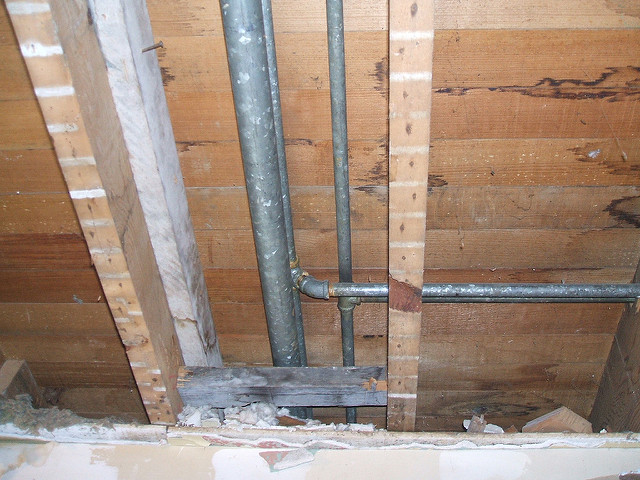The article author is making a few good points relating to Hacks to detect leaks overall in the article which follows.

Early discovery of leaking water lines can minimize a prospective disaster. Besides conserving you money, it will minimize the aggravation and stress. The moment you locate a leak, calling your plumber for fixings is the very best solution. However, some little water leakages may not be visible. If you can not find it with your nude eyes, right here are some hacks that help.
1. Take A Look At the Water Meter
Checking it is a surefire method that helps you find leakages. If it moves, that shows a fast-moving leakage. This means you might have a sluggish leakage that might even be underground.
2. Inspect Water Consumption
Evaluate your water expenses and also track your water intake. As the one paying it, you need to discover if there are any disparities. If you find sudden changes, regardless of your consumption being the same, it implies that you have leaks in your plumbing system. Bear in mind, your water costs must fall under the very same array each month. An unexpected spike in your costs shows a fast-moving leakage.
Meanwhile, a stable increase on a monthly basis, despite the same routines, shows you have a slow-moving leak that's additionally slowly intensifying. Call a plumber to thoroughly examine your residential property, particularly if you really feel a warm location on your floor with piping below.
3. Do a Food Coloring Examination
When it comes to water usage, 30% comes from bathrooms. If the shade in some way infiltrates your bowl during that time without flushing, there's a leak between the container and dish.
4. Asses Exterior Lines
Do not neglect to inspect your outside water lines too. Must water leak out of the link, you have a loose rubber gasket. One small leak can lose lots of water and spike your water costs.
5. Check and Assess the Situation
House owners need to make it a behavior to inspect under the sink counters and even inside cupboards for any kind of bad odor or mold and mildew development. These 2 warnings indicate a leak so punctual attention is called for. Doing routine examinations, even bi-annually, can conserve you from a significant trouble.
A lot more notably, if you recognize your house is currently old, keep a watchful eye on your heating systems, hose pipes, pipelines etc. Check for stainings and also compromising as a lot of pipes and also home appliances have a life span. They will also normally weaken because of tear and also put on. If you suspect leaking water lines in your plumbing system, do not await it to escalate. Call an expert plumber right now so you don't wind up with an awful mess in your house.
Early detection of dripping water lines can minimize a prospective calamity. Some small water leaks may not be visible. Inspecting it is a guaranteed means that helps you find leakages. One small leakage can throw away tons of water and also surge your water bill.
If you believe dripping water lines in your plumbing system, do not wait for it to intensify.
WARNING SIGNS OF WATER LEAKAGE BEHIND THE WALL
PERSISTENT MUSTY ODORS
As water slowly drips from a leaky pipe inside the wall, flooring and sheetrock stay damp and develop an odor similar to wet cardboard. It generates a musty smell that can help you find hidden leaks.
MOLD IN UNUSUAL AREAS
Mold usually grows in wet areas like kitchens, baths and laundry rooms. If you spot the stuff on walls or baseboards in other rooms of the house, it’s a good indicator of undetected water leaks.
STAINS THAT GROW
When mold thrives around a leaky pipe, it sometimes takes hold on the inside surface of the affected wall. A growing stain on otherwise clean sheetrock is often your sign of a hidden plumbing problem.
PEELING OR BUBBLING WALLPAPER / PAINT
This clue is easy to miss in rooms that don’t get much use. When you see wallpaper separating along seams or paint bubbling or flaking off the wall, blame sheetrock that stays wet because of an undetected leak.
BUCKLED CEILINGS AND STAINED FLOORS
If ceilings or floors in bathrooms, kitchens or laundry areas develop structural problems, don’t rule out constant damp inside the walls. Wet sheetrock can affect adjacent framing, flooring and ceilings.
https://www.servicemasterbyzaba.com/blog/how-to-detect-water-leakage-in-walls/

I am just very eager about Top leak detection hacks and I'm hoping you appreciated the new article. Feel free to set aside a second to promote this entry if you enjoyed it. Thanks so much for your time spent reading it.
Details